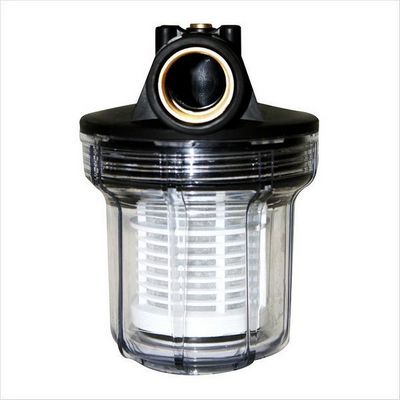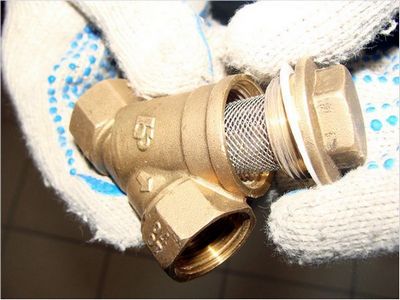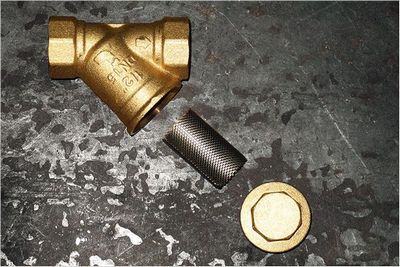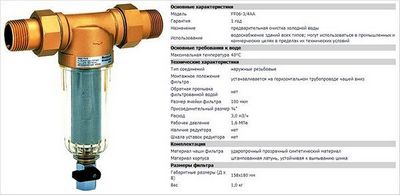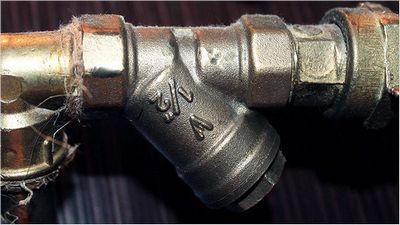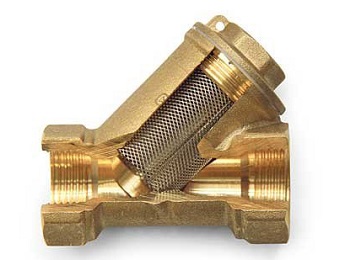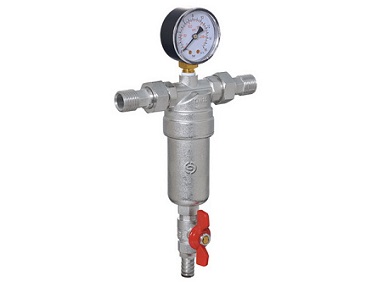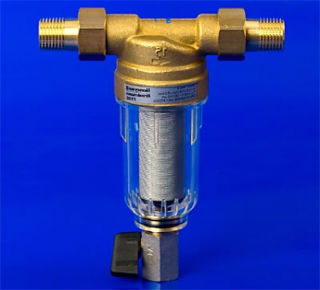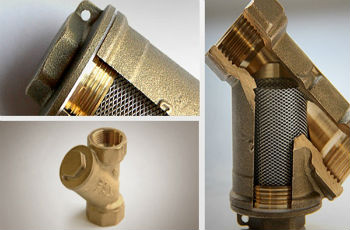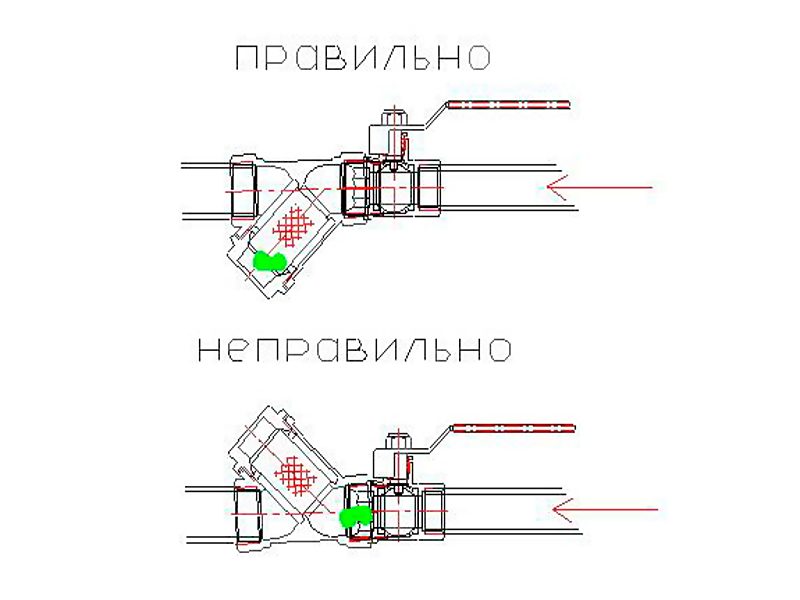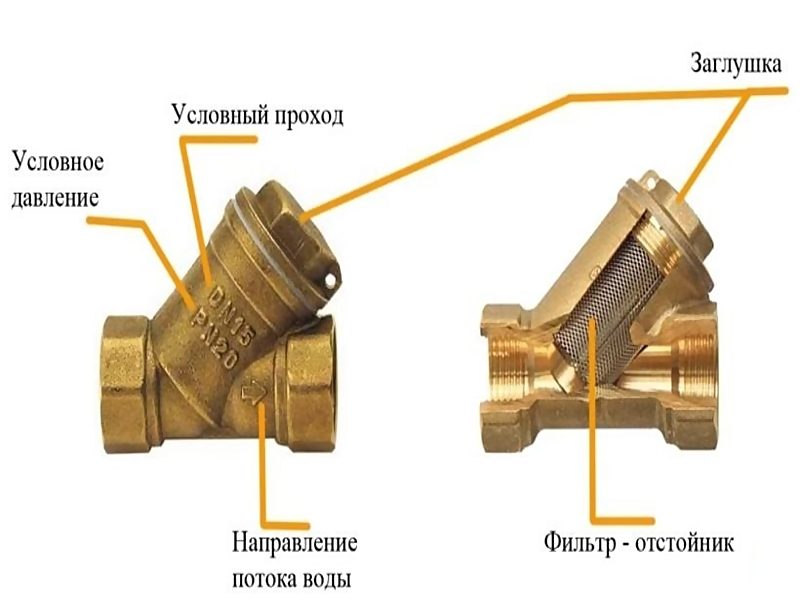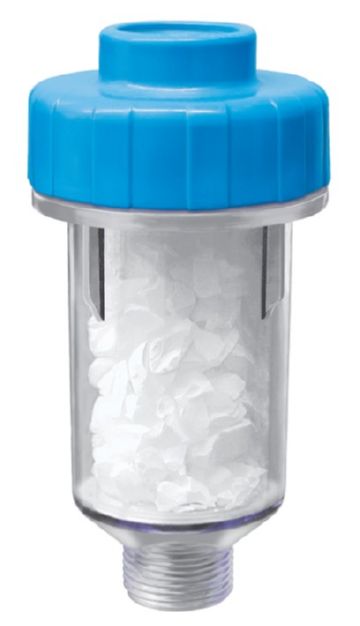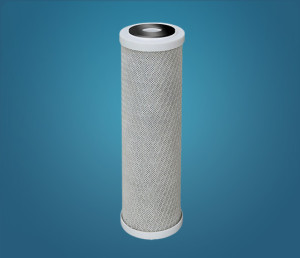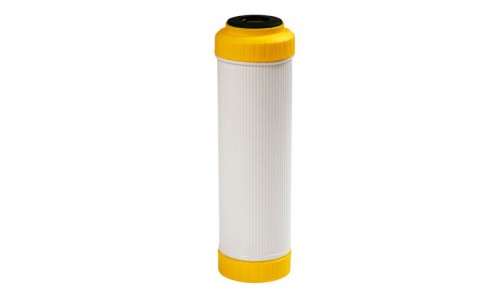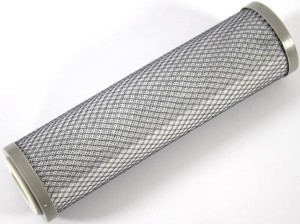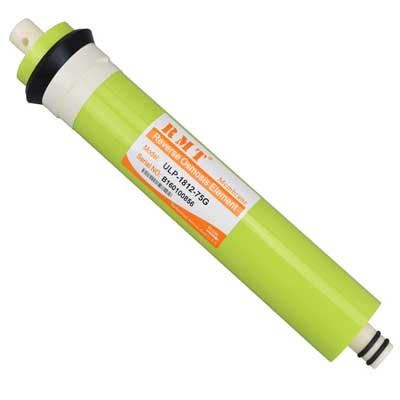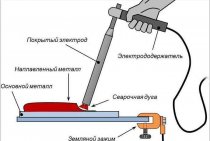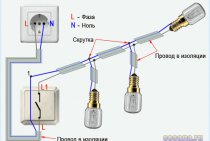About the varieties of cartridges for cleaning filters
Each type of cartridge performs different functions. Models can be double, some are capable of performing several functions at once.
Most often, activated carbon and ion-exchange resin are used as fillers. Coal plays the role of an absorbent, it absorbs impurities with harmful substances. The ion exchange resin works in such a way that substances with harmful properties are replaced inside the system with harmless ones.
Moreover, all the described materials are loose. If the cartridge is of high quality, then it is equipped with gaskets that protect the mass from contamination, and diffusers that organize a uniform distribution.
Products of reel and bulk varieties are produced. They are made from argon, non-woven polypropylene. The latter type of material is capable of filtering compounds of both organic and inorganic types. With such fillers inside, the cartridges are installed inside a transparent flask, which facilitates constant monitoring of the level of contamination.
The following 4 types of cartridges are produced:
- Adsorption.
- Ion exchange.
- Membrane.
- Osmotic.
Installing a coarse water filter
The water supplied through the pipes to the consumer always contains a certain amount of sand, insoluble impurities and suspensions. Scale and limescale from pipes are added to them. Sometimes there is winding material. If all this will directly pass through the counter. faucet or get into the toilet tank, a device for heating water, then they will all quickly break down, and the faucet meshes will become clogged, and water simply will not flow out. To avoid this, a coarse water filter is provided at the water inlet to a house or apartment.
Varieties and principle of operation
In practice, the following coarse filters are used:
- Mesh filters. They are straight and oblique, as well as non-flushing and self-flushing. Non-flushing coarse mesh filters include all designs with sedimentation tanks (mud collectors), which can be located at an angle to the filter housing (oblique) and below it (straight). To clean the accumulated dirt, these filters must be removed and washed. To make it easy to remove all contaminants, there is a special cover at the bottom of the sump. In this case, the water to the house or apartment will be blocked. Self-cleaning filters have a special drainage outlet to the sewer. It automatically removes accumulated dirt from the filter. Mesh cell size from 50 to 500 microns. It is made of stainless steel and has a fairly long service life. The filter housing is made of brass or metal.
- cartridge filters. This flask is transparent for cold water or metal for hot water. A replaceable cartridge made of wound synthetic thread, polyester or pressed fiber is installed inside. The cell size ranges from 1 to 30 microns. For mechanical cleaning, a cartridge with a cell of 5 microns and above is sufficient.
Whatever the filters, they have the same principle of operation: water, entering the filter and passing through a mesh or cartridge, is purified from insoluble impurities.
Installation process
Since the coarse filter must protect all plumbing from solid impurities that have entered the plumbing, it is very important to know how to install it correctly. They do this at the inlet of water into the room after the shutoff valves
On the body of each filter model there is an arrow indicating the direction of installation of the filter. It must be in the direction of the water. This is important because an incorrectly installed filter will not work.
The mesh oblique filter is installed on a horizontal (if the water goes from top to bottom) or vertical pipeline under cramped conditions. The inclined arrangement of the sump does not require much space.
Since all connections are threaded, for installation it is enough to wrap FUM tape or flax on the thread and screw the filter to the valve, and then screw the water meter onto it.
Shut off the water before performing work.
The mesh direct filter is mounted on a straight pipeline if there is free space around. This is due to the size of the sump. It is somewhat larger than the oblique filter and requires space underneath to allow the sump cap to be unscrewed and the filter to be cleaned. Its installation is carried out in exactly the same way as in the first case.
After finishing work and starting the water, check the joints for water leakage. All leaking joints must be tightened.
How to install a cartridge filter correctly? It is installed only horizontally and after the strainer:
- Cut out a piece of pipe. Its dimensions depend on the distance between the inlet and outlet of the filter, other parts (cap nuts, adapters, etc.). Their set is individual in each case.
- Threads are cut on metal pipes, and an appropriate fitting is soldered to polypropylene pipes.
- Connecting parts are screwed onto both ends of the pipe using sealing materials (FUM tape or flax).
- Assemble the filter design.
- The filter cover is attached to the wall. Mounting holes are provided for this.
- Connect the pipes and turn on the water. Check joints for leaks.
All work on the installation of coarse filters is carried out using adjustable and gas wrenches. If you need to cut the pipe, then use a grinder or plastic scissors.
Many manufacturers of household equipment connected to the city water supply network do not provide a guarantee for their products if a filter is not installed at the water inlet to the house / apartment. Recently, mechanical post-treatment began to be done, using additional mesh and cartridge filters in pairs. The disadvantage is the need to change cartridges quite often and the impossibility of reusing them, while it is enough to wash the mesh filters once a quarter.
Purpose and principle of operation
Since the state of public utilities is often deplorable, the water entering the apartment contains rust and other impurities
, adversely affecting the state of plumbing. The filter allows you to avoid rapid wear of the seals of sanitary ware, which are seriously affected by the dirt in the water.
It is known that rusty water can lead to breakdown of metering devices, which will entail quite impressive expenses. Therefore, it makes sense to install such a unit in your home.
Especially dirty water is dangerous for water heaters, dishwashers and washing machines
. Yes, and ordinary taps quickly become clogged with debris, which leads to their breakdown. There is only one way out - filter installation.
The principle of its operation is simple - water passes through a mesh or other filter structure
, delaying the solid elements in it.
2 Types of coarse filters
The filter device itself is extremely simple: in fact, it is a metal mesh that traps impurities from the water. It consists in a body (usually metal), which has an inlet and outlet pipe.
Below the nozzles is a part called a sump - a department where, in fact, filtration takes place. First, the speed of the water decreases in this part - which allows impurities to settle to the bottom of the hull, and not be carried away further. Then - the liquid passes through the mesh, which retains the dirt.
Structurally, the design of the coarse filter may differ in a number of parameters that should be considered separately.
First of all, the material from which the mesh is made should be mentioned. Most often - it is steel, less often - bronze or brass. These strong connections are resistant to mechanical damage and withstand pressure drops.
The difference is in the connection method - the filter can be mounted in the system by means of a coupling or flange connection. This difference is predetermined by the dimensions of the pipe - with a diameter of 2 inches or more, a flange is used, if smaller, a coupling.
In these ways, an industrial version is usually mounted, in other cases, threaded filters are used. Such household models are relevant for pipelines that run inside apartments and residential cottages. In this case, the installation can be carried out both directly with the pipe, and through the "American".
Pore size is, in fact, a key quality parameter that affects how well the filter can purify water. The smaller the size of the mesh cells, the more dirt it can hold. For a coarse filter, this parameter varies from 50 to 400 microns.
According to the location of the sump, the products can also be divided into two categories:
- Straight.
- oblique.
In the first case, the sump is located perpendicular to the water flow, forming a T-shaped body with inlet and outlet nozzles. Thanks to this solution, this department can be quite large. Therefore, a direct sump will be able to better clean the water passing through it.
The oblique design of the body is easy to determine visually - in this case, the sump is installed at an angle to the water flow. This reduces efficiency compared to a direct filter. Not much, of course - household filters of this type will also successfully cope with the task.
However, they are best used where the installation of a direct model is simply impossible - due to lack of free space (for example - when the pipeline runs too close to the floor or to another pipe).
One of the relatively new and very useful nuances is also the way to clean the filter itself - after all, sooner or later the sump will overflow with accumulated dirt, which will need to be removed from there. In this regard, products are divided into two categories:
- Sump.
- Filter with flushing system.
The first option is non-flushing. This category includes oblique devices and some straight ones. In this case, the sump is closed with a removable cover - through which you can clean the device from dirt.
Its disadvantage is that cleaning in this case requires disassembling the device - the cover will have to be unscrewed first, and then installed back.
The second option is more convenient - in this case, the body is equipped with a crane. Cleaning is extremely simple: the tap opens, and the sludge is drained into a substituted container.
On sale you can find an even more perfect option - a self-cleaning coarse filter. Such a device is equipped with two sensors - one is installed at the inlet, the second - at the outlet. By measuring the pressure, the sensors record its difference - if it decreases at the outlet (after cleaning), it means that the self-cleaning filter is dirty.
It is cleaned through a valve that opens and releases sediment. A self-cleaning filter is good because you do not have to monitor the state of the node - it will automatically determine the need for cleaning and perform it.
The most famous representative producing such models is Honeywell. Honeywell filters are used most often in industry, however, for domestic tasks, the company also produces a number of models suitable for water supply.
Of course, Honeywell devices cost an order of magnitude more expensive than simpler options - this, in fact, is their only drawback.
2 Types of mesh filters
Mesh filters are straight and oblique (y-shaped), for cold (with a transparent plastic flask) and hot water (with a metal flask), and are also divided into non-flushing, flushing and self-cleaning
.
Non-flushing samples are filters of the smallest dimensions, and their cleaning is possible by unscrewing the special nut located on the flask of the device, removing and cleaning the mesh manually. Before cleaning, turn off the water supply taps.
Sometimes such a filtering device is equipped with two pressure gauges, so that their readings can be used to judge the degree of contamination. In this case, its size will inevitably increase.
Advantages: small size, low price, easy installation and operation, low price.
Disadvantages: the need for regular manual cleaning, a relatively short service life.
There are a few things you need to know before you go shopping for a strainer.
First, determine the purpose of the installation. To protect most equipment from mechanical contamination, it is sufficient to have a coarse filter, the replaceable mesh of which has cells with a size of 100 microns.
For better purification of water intended for drinking, it is worth purchasing an additional fine filter (50 or 20 microns).
Then the connection method itself is taken into account - using flanges, external or internal threads, as well as connecting dimensions, for example ¾ ", ½". Threaded connections up to 2" and flanged connections over 2".
The position of the pipeline - vertical or horizontal - will also play its role. The working position of flushing and self-cleaning devices is on a horizontal pipeline. In a vertical position, only universal filters of some manufacturers specially designed for this purpose are effectively cleaned.
In addition, some advanced models are equipped with swivel flanges that allow even coarse and fine wash filters to be installed on vertical pipelines.
It is also worth considering the size of the filter installation area - the small size of the installation space can limit the choice. The smallest dimensions are ordinary non-flushing ones, which are two times shorter and less in height than the rest.
You need to be very careful with the dimensions, since a lot depends on them. Mismatch in dimensions will make even the best and most advanced filter completely unusable. And you will not be able to change anything, since such equipment is not subject to modernization or modification.
Therefore, when sizing, always consider pipe dimensions, nominal positions in the system, and all other parameters.
Thus, if you need a filter to protect equipment from mechanical impurities and you are not limited in terms of installation space and finances, then the self-cleaning coarse filter of the German company Honeywell with a detachable stainless mesh with a mesh size of 100 microns is the best choice.
In this case, it is better to choose a filter element with backwash, as it is much easier to work with. And you will have to wash the filters quite often. Especially if you have contaminated water running in the system.
3.1
The principle of operation of an industrial water strainer (video)
Coarse water filters for cottages and apartments are used as independent devices or as the first stage in complex fine purification systems. Their installation not only improves the consumer qualities of the liquid, but also protects water-consuming and water-heating equipment. In complex systems, the presence of such a device reduces the intensity of contamination of filters (cartridges) of subsequent stages, increasing their service life and reducing operating costs.
The main purpose of coarse water filters is to retain large insoluble particles, both hard and soft.If in individual water supply systems such impurities are mostly sand, clay or silt coming from a source (well or well), then in centralized communications they are rust particles from old pipes. No matter how well the cleaning is carried out after extraction (from artesian wells or reservoirs), in the process of its transportation to consumers through old communications, which are a common misfortune of public utilities in almost all regions, the water quality deteriorates noticeably.
Separately, we note that it is imperative to install a coarse water filter before in order to avoid its breakdowns.
Guidelines for Installing Mud Filters
The most common devices for coarse water purification, due to their versatility, low cost and ease of installation, are oblique mesh filters. The reservoir in the slope is equipped with a cylindrical mesh and a plug. The flow of water passing through the filter element is cleaned from mechanical impurities with dimensions of more than 10-15 microns.
In many cases, such a device helps to save the mechanisms of not only the CPU, but also many other household appliances that use water in their work. Finer filters that trap fine dirt particles can be installed at the inlet of appliances or on mixers. When installing a filter, follow a few rules:
- the filtering device is installed immediately after the shut-off valve, at the inlet of the water supply to the apartment;
- the direction of water in the pipeline must coincide with the arrow indicated on the valve body;
- on vertical sections, the filter is installed with the direction of the water flow from top to bottom;
- the dirt collector is always located downwards with a stopper, under which it is necessary to provide free space for removing the net.
The fittings are selected according to the parameters of the apartment water supply system, according to the nominal diameter of the pipes and the working pressure, these data are always indicated on its body. The connections of the branch pipes, the filtering device, are reinforced with FUM tape or linen tow. By turning on the water for a short time, the reliability of the installation is checked; in the absence of leaks, the filter can be used without fear.
Depending on the degree of water contamination, filter cleaning activities can be either rare or quite frequent. It is recommended to check the filling of the dirt compartment of the filter regularly, at least once a year, without waiting for the water pressure to decrease. Long-term exposure of the threaded connection in an aggressive environment leads to sticking of the cover and it becomes difficult to remove it.
Our company carries out a complex of works on maintenance of apartment metering devices, which includes cleaning the coarse water filter. In front of the meter, not only a filter is installed, but also a shut-off valve, the failure of which, in case of careless handling, can lead to an accident.
Sequence of work:
- shut off the water;
- with a wrench, carefully, without jerking, remove the cover from the slope;
- remove the mesh and clean it with a stiff short-haired brush;
- in case of mesh defects, update it;
- clean the tank chamber with improvised means;
- put the mesh back in place
- screw the cover, replacing the seal on the thread;
- turn on the water and check the connections.
If the filter was included in the sealing chain, the housing office must be warned about the removal of the seal so that at the end of the event they restore the seal.
Residents of apartment buildings often find that the water entering their apartment contains impurities. This is due to the state of urban networks, which are significantly worn out.
The water purified at the station, passing through the pipes, is contaminated with particles of limescale and rust. To protect yourself from such debris, you need to install a coarse water filter.
Such a product consists of a body and a metal mesh.The body can be polypropylene or metal. It is the mesh that traps impurities, purifying the water from the particles contained in it. Its cells are quite small - their size varies from 20 to 500 microns
.
Coarse water filters for an apartment there are several varieties:
- reticulate;
- with cartridge;
- pressure high-speed.
The mesh device is equipped grid with small cells
. Such devices are non-flushing and self-flushing types.
Non-flushing devices
should be disassembled and cleaned regularly. To do this, turn off the water in the apartment, disassemble the filter, clean it and then reassemble it.
Self-flushing devices
this procedure is not required. They have an automatic cleaning feature. They are equipped with a drainage pipe that receives water with debris in it after self-cleaning.
Cartridge devices have cartridge capable of retaining dirt particles as small as 0.5 microns
. In addition, it prevents the penetration of substances with a fibrous structure into the apartment. If the filter has a transparent flask, then it is designed to filter cold water, and if its body is made of stainless steel, then the device is mounted on a hot main.
The pressure device has a container made of corrosion-resistant metal
. Inside it is a filter material. It is able to purify water with impurities of different structures. At the top of the device is an automatic unit with a control function.
Advantages and disadvantages
This unit has its pros and cons. If we talk about the benefits, then it is worth mentioning the following:
- simple design;
- ease of maintenance: this does not require special skills and special equipment;
- the possibility of purification and full restoration of working capacity;
- low price for components;
- low cost of the device itself;
- environmental friendliness: there are no cartridges made of synthetic materials that need regular replacement.
This filter also has disadvantages:
- the ability to retain only fairly large particles of dirt, in contrast to a unit designed for fine cleaning;
- purification only from mechanical impurities, while biological and chemical substances remain in the water.
Therefore, those who wish to receive perfectly purified water for drinking and cooking will need to additionally use a household filter that rids the liquid of other undesirable impurities.
When choosing a rough cleaning device for an apartment, you need to pay attention to the following:
- On sale you can find mesh filters that have pressure control valve and pressure gauge
. They allow you to protect household appliances from drops in water pressure, as well as monitor the pressure in the pipeline. -
Mesh devices are the most common
, since they are inexpensive, they can be used for a long time without replacing the filter elements. We can say that this is the most budget option. - Better for small diameter pipes choose threaded type filters
. They are screwed directly onto the pipe or connected to it with union nuts - "American". -
According to the location of the sump, the devices are divided into oblique and straight
. For straight units, it is perpendicular to the water flow and looks down. For oblique filters, the sump is located at an angle to the direction of the water flow. Such products should be purchased when the pipe is located very close to the floor, in a word, where there is little free space.
Types of filters and cleaning features
Coarse cleaning involves the removal of exclusively mechanical impurities. And if the manufacturer does not provide additional functions, the filter only cleans water from rust, silt and sand. To screen out this kind of pollution, a metal mesh with a fine mesh size (on average from 20 to 500 microns) is used.
There are the following types of filters:
- with backwash, operating in automatic mode;
- without rinsing, requiring regular manual cleaning (models are made of transparent plastic, through which the degree of contamination is clearly visible);
- with a pressure control valve - devices are able to prevent water hammer and protect household appliances from pressure drops;
- equipped with cartridges, that is, requiring regular replacement of working elements (filter impurities ranging in size from 0.5 to 30 microns);
- pressure type, designed to work in a strong flow and equipped with an automatic control unit for the timely regeneration of filter elements (remove impurities from 30 microns in size).
Some models can be equipped with two pressure gauges, which make it easier to control the clogging of the filter elements. If the pressure at the outlet of the device has dropped, it is time to replace it or clean it manually.
Coarse cleaning cannot eliminate the smallest impurities, from 5 microns in size.
It only eliminates large mechanical particles (rust, sand). To get rid of any pollution, including the most dangerous chemical ones, additional installation of fine filters (reverse osmosis systems, ion exchange and sorption filters) will be required.
More about each type
Adsorption chambers are filled only with activated carbon. But the quality of cleaning decreases with further operation of such equipment. Adsorption cartridges have a short service life. If you do not replace it on time, dirt penetrates into the composition of the water.
Replacement, which takes 2-3 hours, is the main advantage of this variety. Such cleaning systems are easily transferred from one place to another. And keep prices affordable. The design of the filter depends on how long this product will last.
- Under the sink works on 7.5 thousand liters.
- Pitchers handle 750 liters.
- Nozzles on cranes without problems work up to 1 thousand liters.
Ion-exchange filters are designed in such a way that they replace one substance with another - with a dangerous composition for less dangerous ones. But the period of effective use of such devices is very short. But after purification, the water becomes pleasant to the taste. But cores and hypertensive patients are not recommended to use water that has passed through ion-exchange filters.
Filtration is carried out at a speed of 5 liters per minute. In a few minutes, the removal of chemical compounds in which magnesium and calcium are present is organized. A mandatory requirement is the installation of a sorption, reverse osmosis housing in front of the filter.
Membrane varieties - a molecular sieve of cells enclosed in a membrane. Productivity increases if the diameter of the pores and membranes match. The membrane takes on the entire volume of liquid. The degree of purification up to 90 percent and a long service life are the advantages of systems of this type. But organics, insoluble substances do not pass through them. Membrane cartridges are capable of processing 15 thousand liters of water.
The frequency of repair and replacement work depends on how intensively the water supply system is used at this facility. And on how many harmful impurities enter the fluid flow. Orientation to the indicators of pressure relief from the tap, pressure gauge readings before and after the filters is acceptable.
Installing coarse water filters is not such a complicated procedure. It is difficult only to choose high-quality equipment that can last up to several decades. It is better to consult with the employees of the Alfatep store, then it is easier to take into account all the properties characteristic of the equipment. This also determines the safety of expensive household appliances that are already working at the facility.
The filters produced by the industry differ in design and purpose. The price of these products is also different - in many respects it depends on the popularity of the brand offering its products on the market
.
Change filters and clean. We repair the system
Depreciation of the cleaning element, accumulation of dirt are natural processes for equipment that is actively used. Prevention is necessary, otherwise the service life of the equipment will not increase. Depending on the type of cleaning element, connection scheme, cleaning is carried out in several ways.
Cleaning is not needed if the cartridge type of installation is operated. For a certain time, the cartridge simply changes to a new one.
In several steps, mesh models are cleaned if there is no flushing scheme. First, the water supply to the filter is shut off. The sump cover is opened using wrenches. The grid is taken out, the dirt merges into a bucket.
Next, the mesh is gently blown, washed with water. If there is damage, the part is replaced with a new one.
When flushing is completed, assembly is carried out, with the reverse sequence of actions
The main thing is to pay attention to paranitic and rubber gaskets.
Filter cleaning is also carried out using flushing systems. They shut off the water supply to the dwelling, before and after the filter
The return feed opens. Next, the filter or plug opens. The grid is washed with a strong pressure of water. The job takes 5 minutes maximum.
